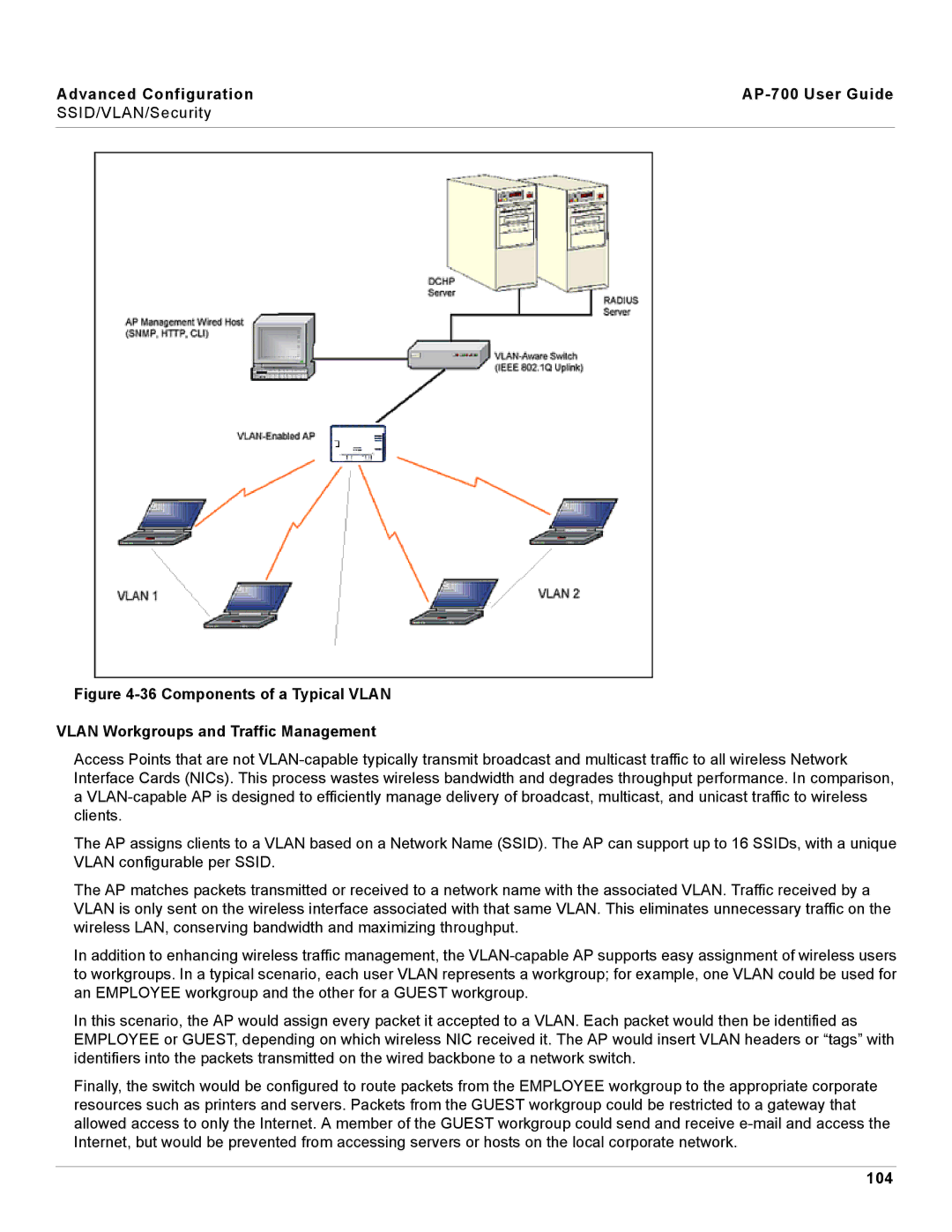
Advanced Configuration |
|
SSID/VLAN/Security
Figure 4-36 Components of a Typical VLAN
VLAN Workgroups and Traffic Management
Access Points that are not
The AP assigns clients to a VLAN based on a Network Name (SSID). The AP can support up to 16 SSIDs, with a unique VLAN configurable per SSID.
The AP matches packets transmitted or received to a network name with the associated VLAN. Traffic received by a VLAN is only sent on the wireless interface associated with that same VLAN. This eliminates unnecessary traffic on the wireless LAN, conserving bandwidth and maximizing throughput.
In addition to enhancing wireless traffic management, the
In this scenario, the AP would assign every packet it accepted to a VLAN. Each packet would then be identified as EMPLOYEE or GUEST, depending on which wireless NIC received it. The AP would insert VLAN headers or “tags” with identifiers into the packets transmitted on the wired backbone to a network switch.
Finally, the switch would be configured to route packets from the EMPLOYEE workgroup to the appropriate corporate resources such as printers and servers. Packets from the GUEST workgroup could be restricted to a gateway that allowed access to only the Internet. A member of the GUEST workgroup could send and receive
